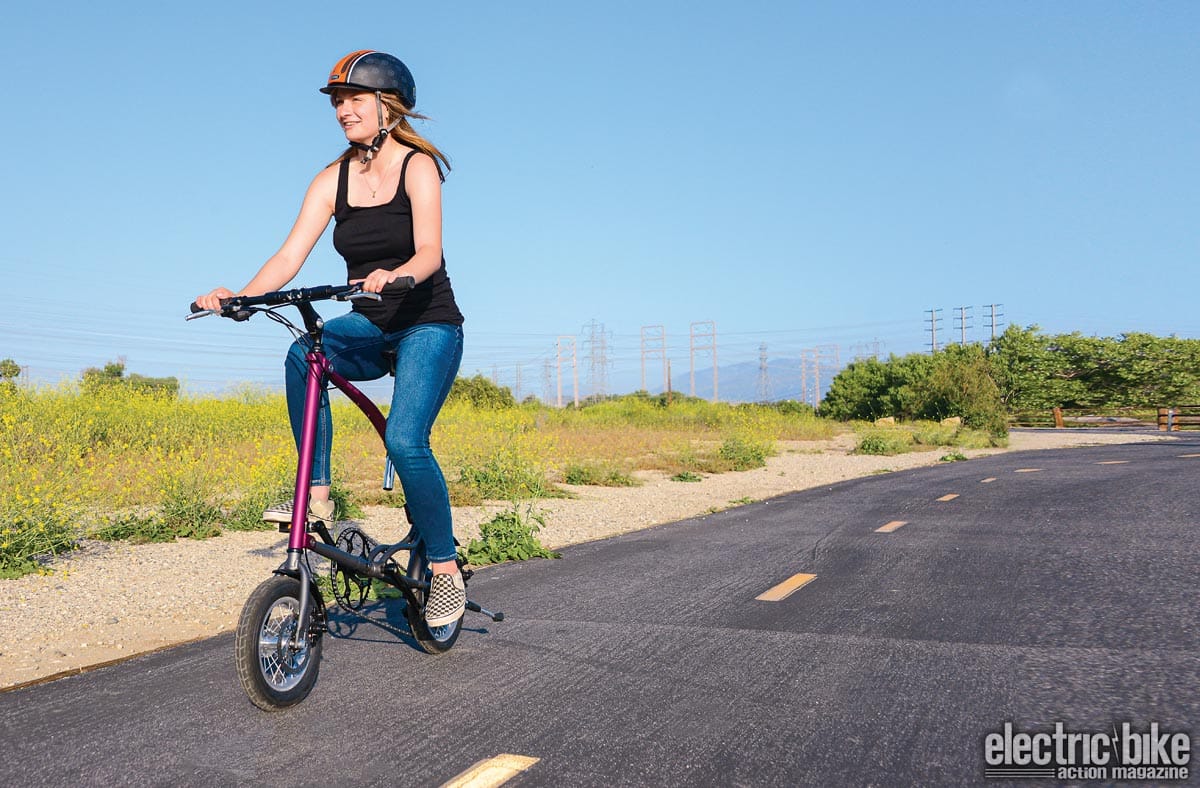
Action Photos: Pat Carrigan
The Ossby Curve folding electric bike showed up at the office, looking unlike any folding bike we’ve ever seen. And, as we’ve learned from previous encounters with odd-looking bikes, that may or may not be a good thing. The easy folder comes from Spain, and the first comments we got on it were that it looks like something out of a Ringling Brothers act, with a medium-sized frame and a pair of Lilliputian wheels. What is missing from that thought, however, is how ingenious the design is.
The unique way that this bike folds up is simply by releasing one lock at the bottom of the downtube and pulling up. This folds the bike vertically, bringing the wheels together and oriented the same way. Then the bars fold back to make steering while moving it incredibly easy. The pedals fold in, making it tall but narrow, excellent for standing next to you on the train, or to store in a closet. It is too tall to fit under a desk.
The other great part is that if you fold it while the kickstand is up, it is then oriented in the downward position, allowing it to easily stand up on its own.
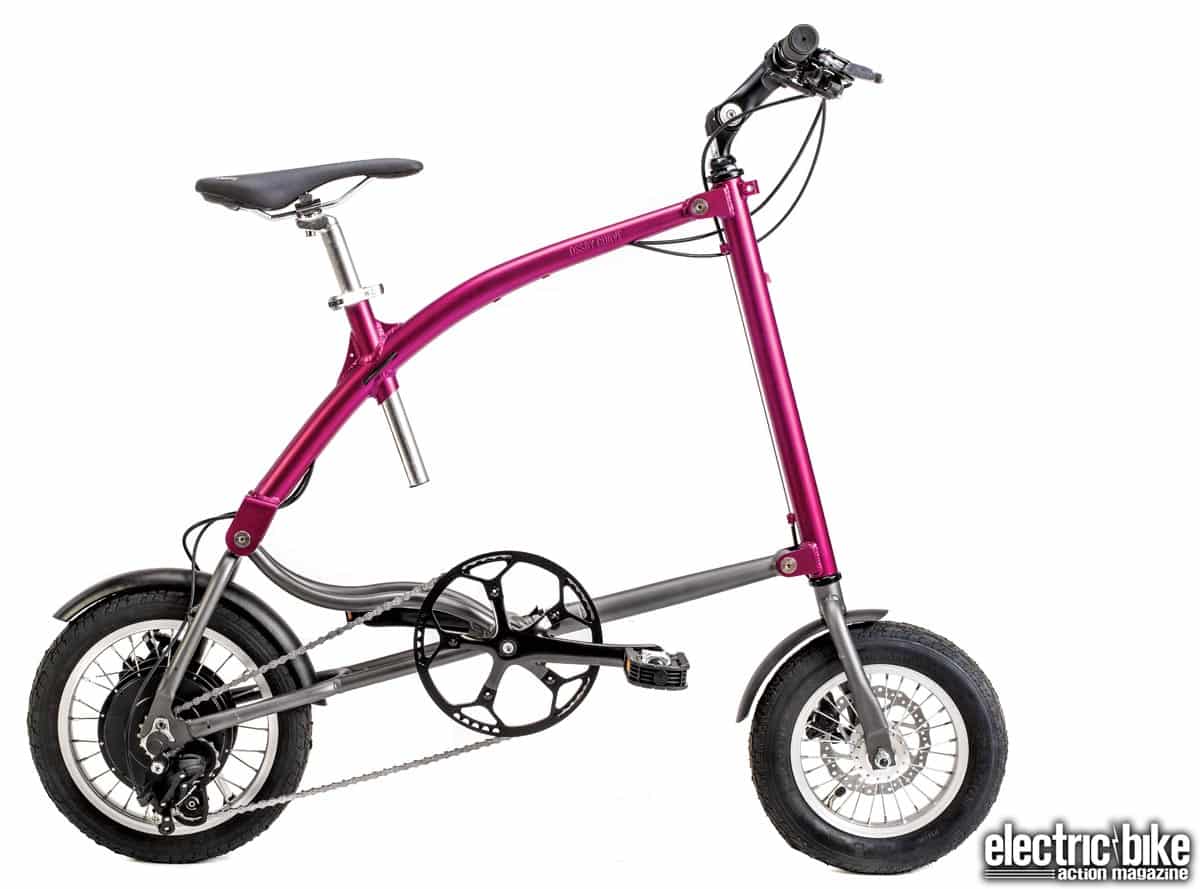
THE PARTS
This bike has an interesting drivetrain. As expected with a folding bike with a “mullet” set of wheels (12-inch front/14-inch rear), it has a massive 53t front sprocket and a 3-speed rear cassette with very little range, though we found it enough to get going and speed along. The wheels also sport 1240mm disc brakes.
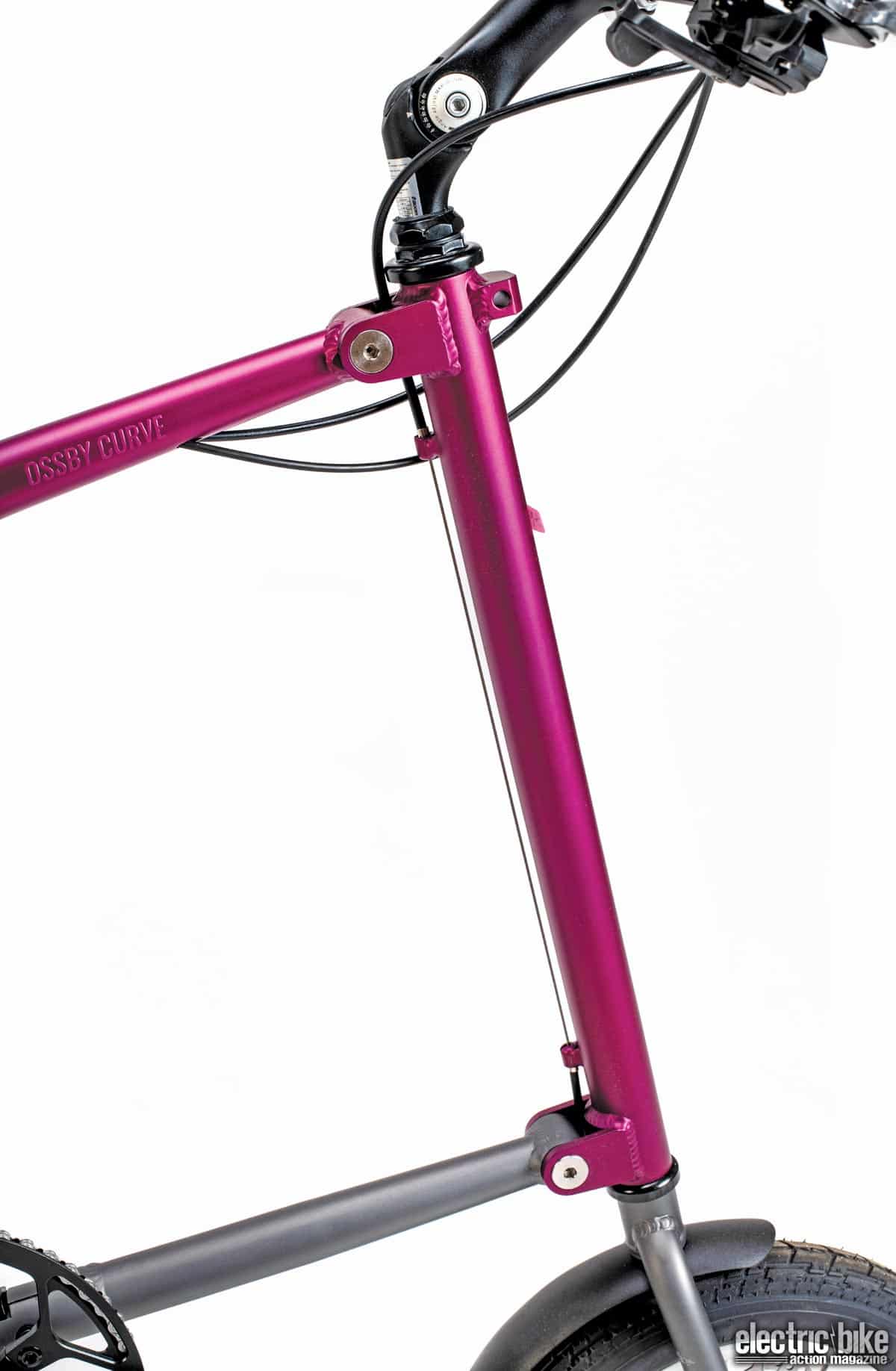
THE MOTOR
The Keyde-branded rear hub motor is quite unique in that all the components—the motor, battery and controller—are built into the rear hub. There are no external wires, but merely a charge port to charge it up. It puts out 250 watts with 25 N/m of torque and has a
300Wh battery.
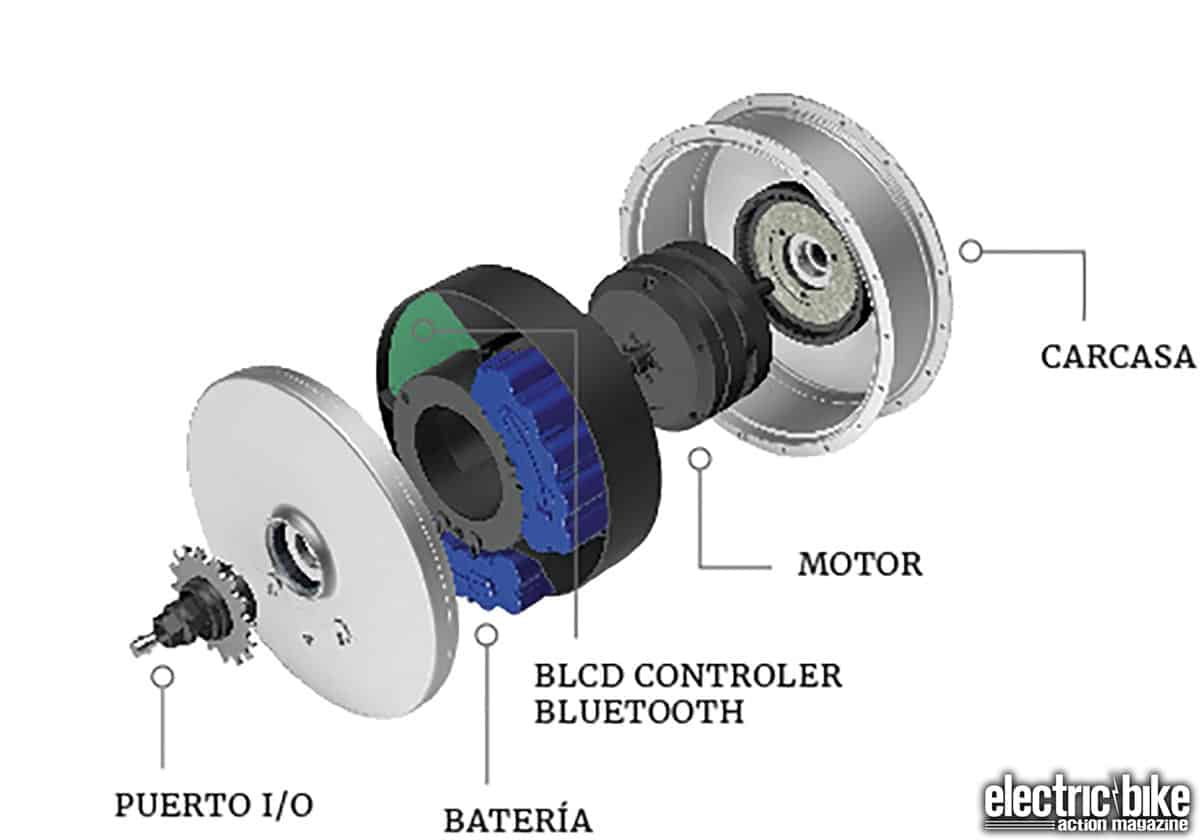
You can use your smartphone as the display using the Keyde app. It’s simple, elegant and easy to use. There are three modes, including Eco, Tour and Sport.
“The first comments we got on it were that it looks like something out of a Ringling Brothers act, with a medium-sized frame and a pair of Lilliputian wheels (one is 12 inches and the other is 16 inches).”
The bike came with no instructions at all, and we couldn’t get them through ELV, Ossby or Keyde. Finding the charge port is tricky; it’s on the drive-side rear axle, hidden under a dust-protecting cap that looks like a safety cap covering the axle.
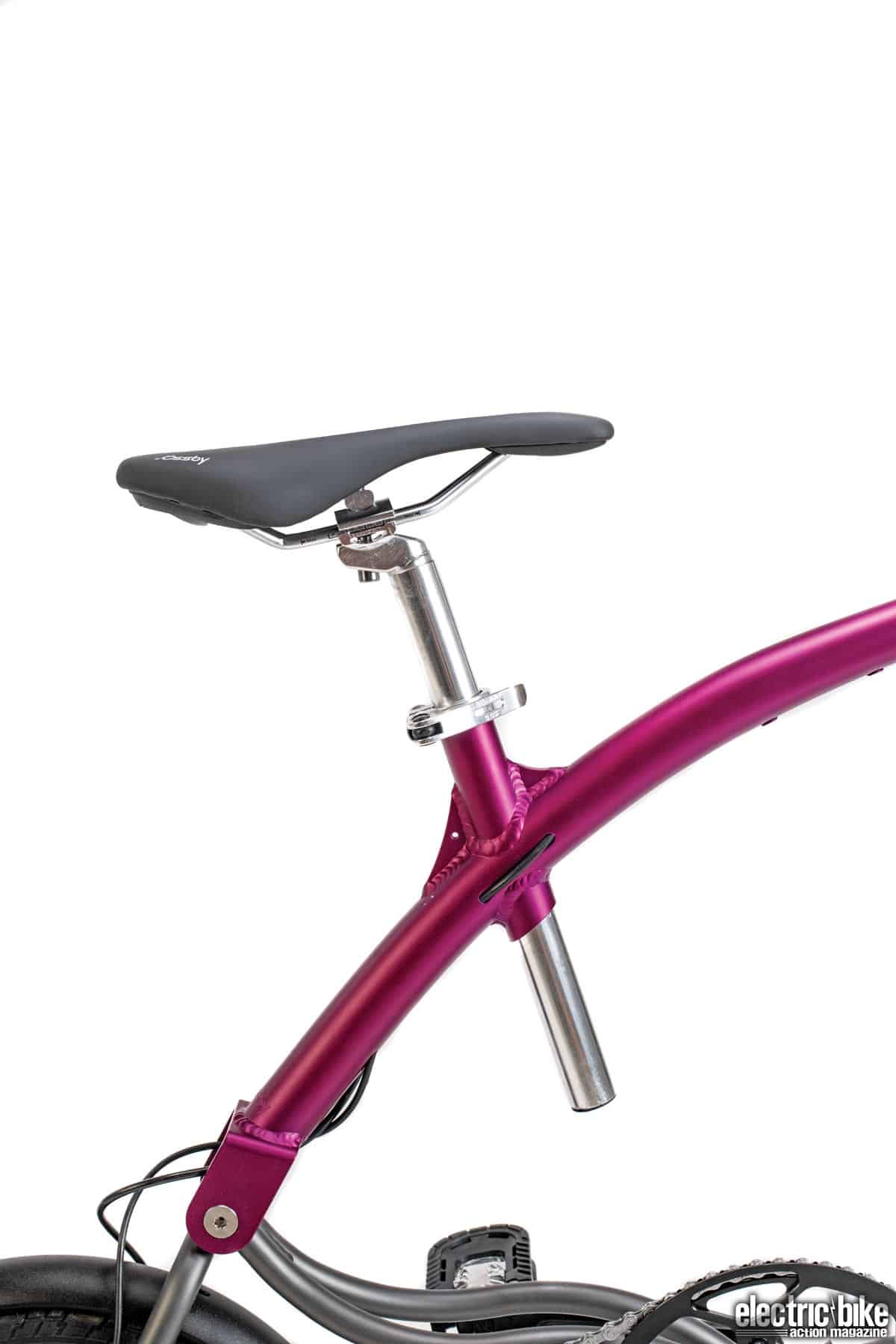
The system seems to be always on. There’s no apparent switch, though sitting for a couple of days, it didn’t lose any significant charge. It connects on its own to the Keyde app via Bluetooth. From there you can change all kinds of parameters. We accidentally marked it at the wrong voltage, and that confused the system into thinking the full battery was almost completely empty. Make sure you set it for 24V. It seems to offer the chance to take it above 15.5 mph, but that seems not to be the case when riding.
WHO IT’S MADE FOR
If you’re a commuter who wants a bike that’s easy and convenient to take on a train or bus. Most folding bikes aren’t very travel-friendly the way they fold, and it can take 30 seconds to properly fold up sometimes. This one can easily be folded in a few seconds and stored in a closet when not in use.
THE RIDE
We rode it with the settings that were in place when the bike was delivered and it worked well. As mentioned before, when we accidentally put in the wrong voltage, the system thought the battery had no charge left and started to go into limp mode (a low-power modeto protect the battery and offer less assist). We left with a full charge, made it two to three blocks, and the battery indicator showed one red bar. That was concerning, so we
went back and fully charged the battery again.
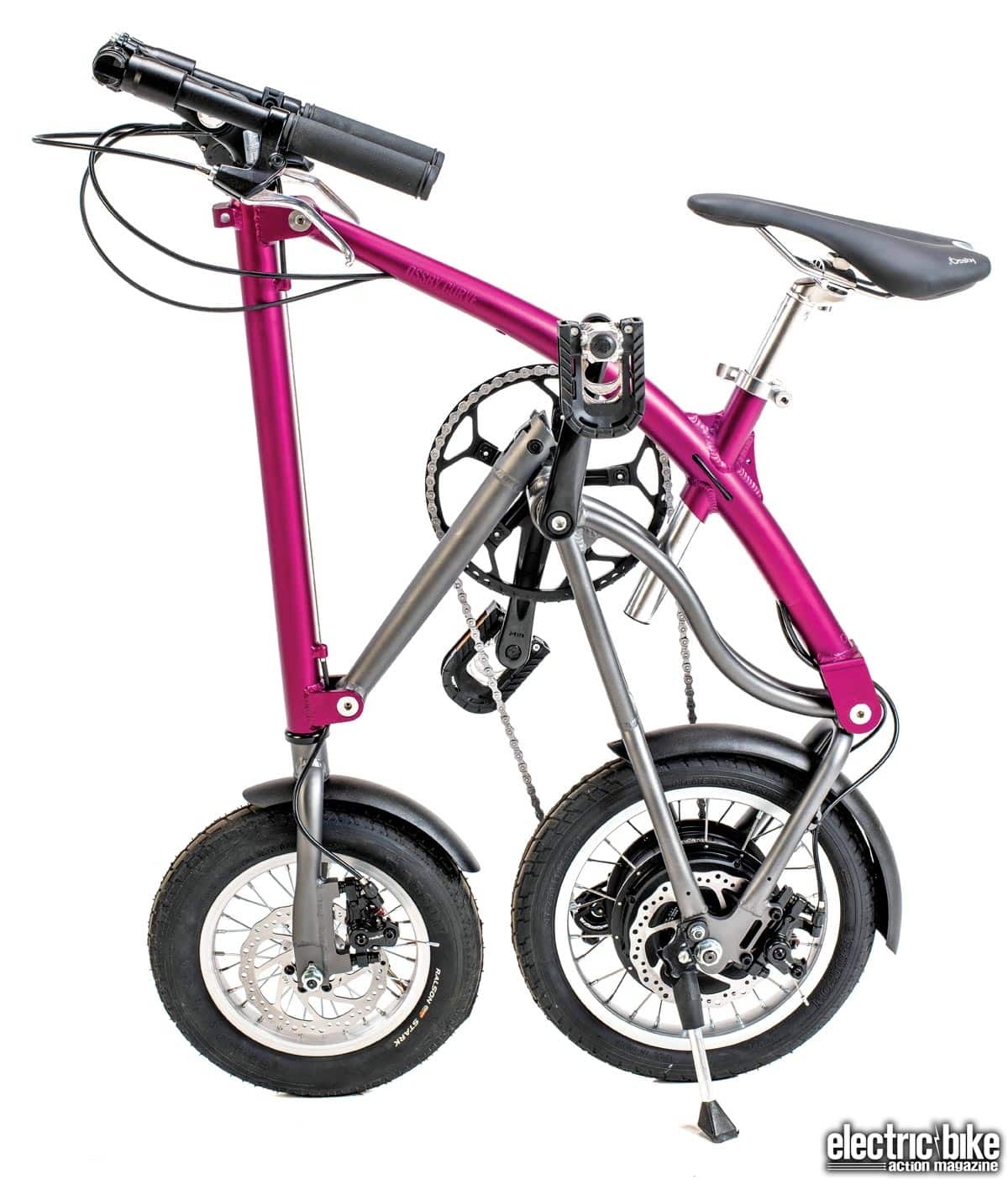
When we finally connected and got the settings right, the bike rides really well. The app connects quickly and passively though, in our experience, with a phone mounted to the handlebar (there’s no other display), the connection drops off often, but then reacquires it pretty quickly. It also has some latency, there’s a few seconds of lag in the readout, so it’s not quite real-time, but there’s a ton of useful information on it, including speed, power output, odometer, battery level, actual voltage, a trip meter, and average and max speeds
Power doesn’t kick in until a full rotation of the cranks, so it’s definitely good to start off in low gear. When it does, it comes in just shy of what we’d call abrupt, and you can ghost pedal and have it cruise at the maximum speed (up to 15.5 mph depending on the mode). There’s Eco, Tour and Sport modes, switchable via the app. We honestly noticed no difference between Eco and Sport, save for higher speed support.
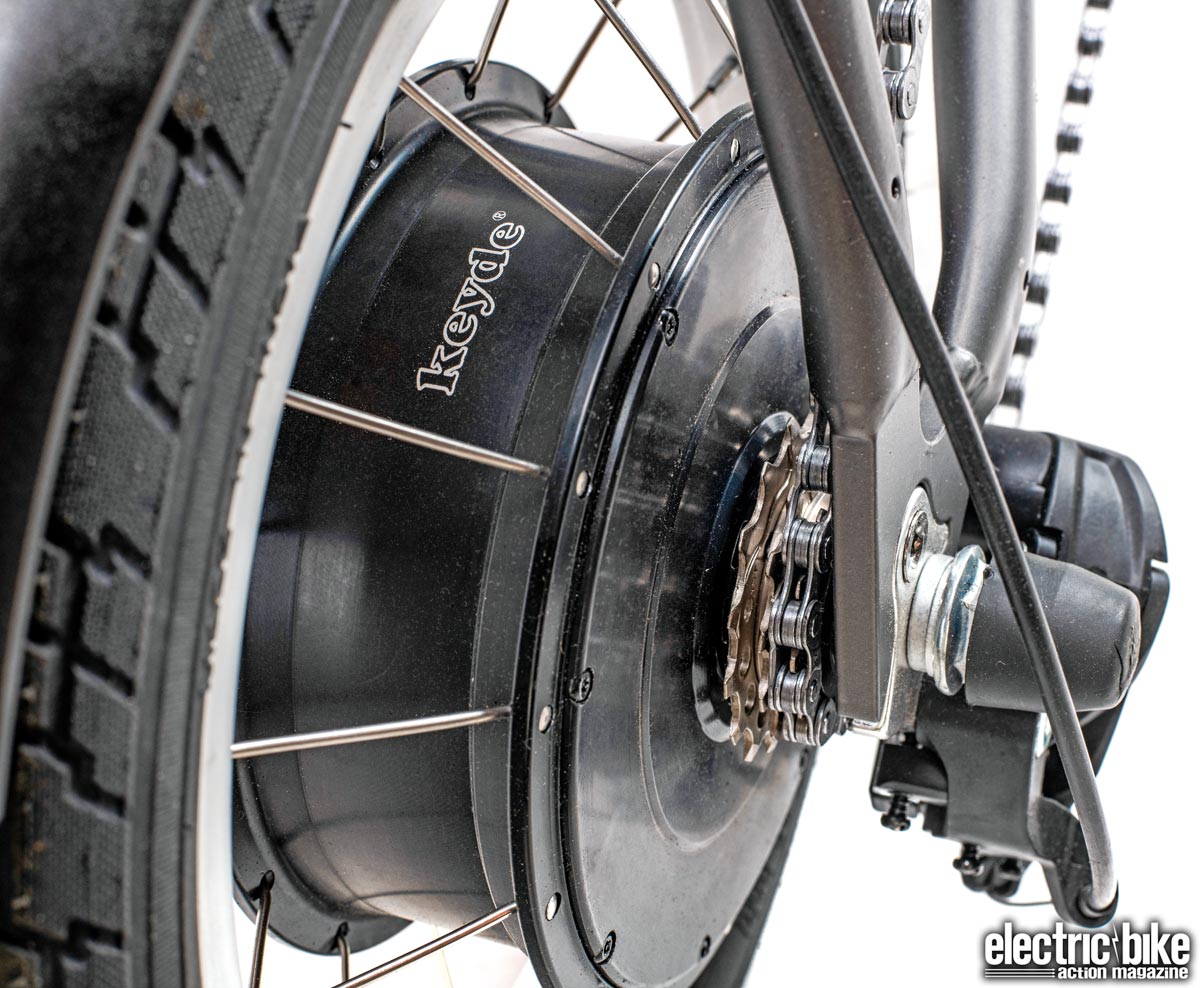
The hydraulic brakes are a nice touch, though there are no cutoff switches. Because the motor carries on a second or two after we stopped pedaling, we would brake a little harder, which sometimes led to a momentary skid with the back wheel. It was nothing threatening to the handling, but something worth noting. The small wheels rolled pretty well most of the time, but over streets with a lot of root bumps or debris in the road, that tiny 12-inch front wheel could be bump-steered pretty easily. Just be careful, especially if you ride one-handed much.
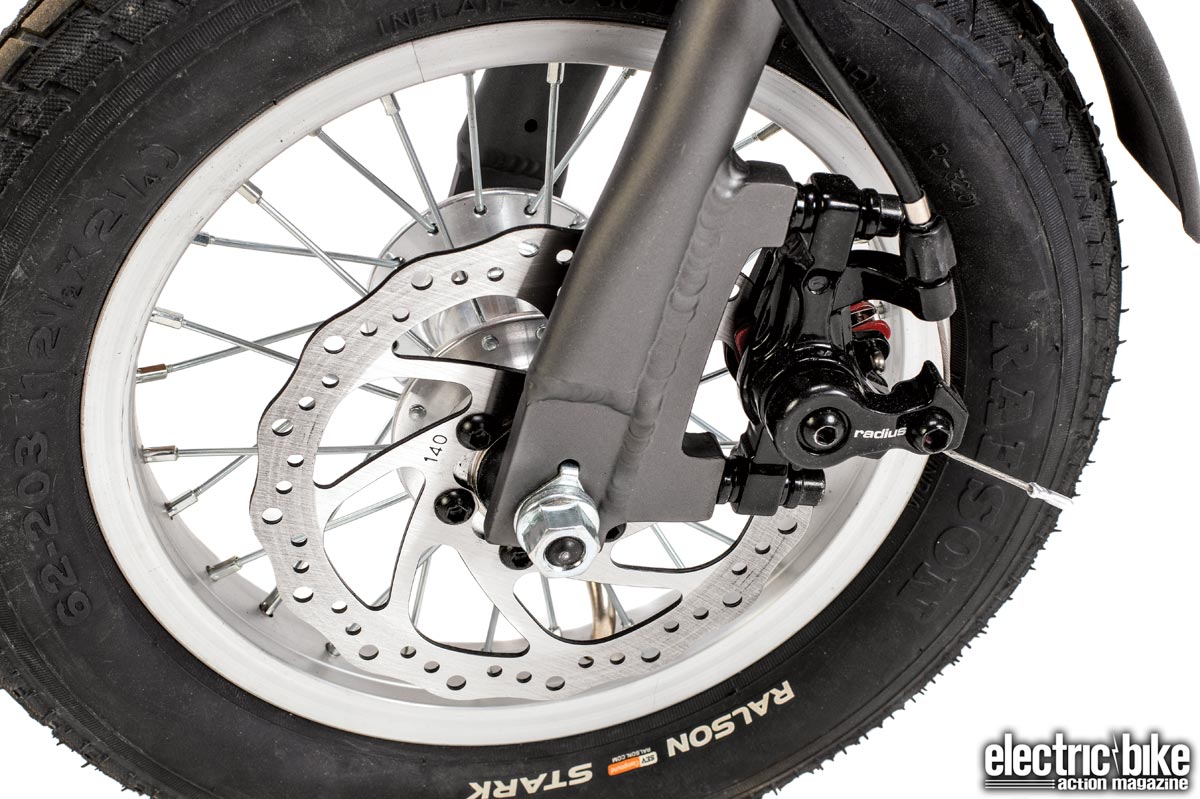
We’d highly recommend getting a good, trustworthy handlebar mount for your phone, as the information displayed is very useful. Nerdier types will likely enjoy keeping an eye on the voltage instead of the battery gauge. Those who prefer more simplicity can use the app to set the mode, then put the phone away in a pocket or pack.
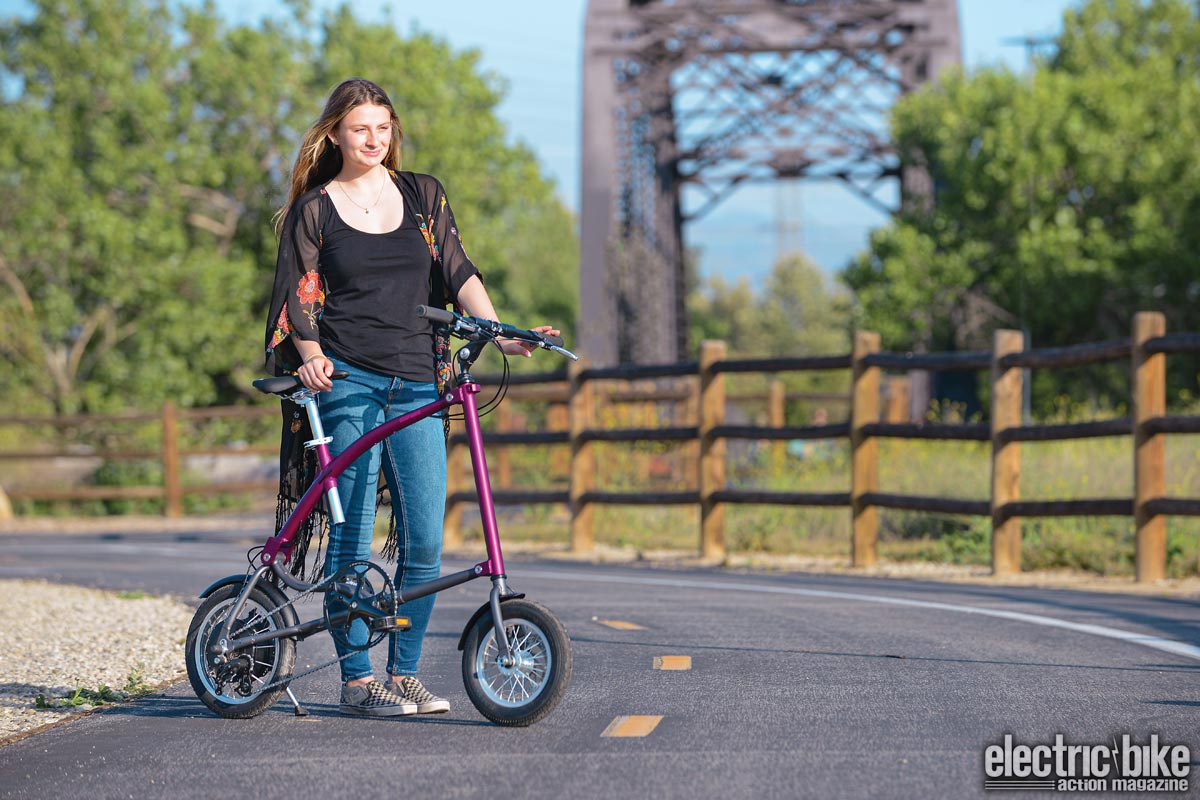
THE VERDICT
While the $1999 price tag may seem steep for such a diminutive folding e-bike, it really isn’t. This bike ticks a lot of boxes for performance, engineering, overall ride quality and convenience. We found that it seems well-priced for this. It’s easy to fit a couple of them in your back seat or trunk to take for rides. They’d be good in an RV, as well as great for apartment-dwelling commuters who need it for the last mile and to run errands. Weighing in at just under 30 pounds, the bike was easy to carry.
SPECS
OSSBY CURVE
Price: $1999
Frame: Aluminum
Fork: Aluminum
Motor: Keyde 250W
Battery: Lithium-ion, 300 Wh, integrated in the motor
Controls: Keyde app
Charge time: 2–3 hours
Top speed: 15.5 mph
Range: 70 km (claimed)
Rear derailleur: 3-speed 11-15T
Chain: KMC
Brakes: Radius, mechanical disc
Saddle: Ossby
Rims: Aluminum, 12” front, 14” rear
Hubs: Ossby
Tires: Ralson 12.5×2.25” (front) 14×1.75” (rear)
Weight: 29.7 lb.
Color choices: Red or blue
Sizes: One size
FOLLOW US on…
Facebook at /YourBestLifeGoods
Instagram at @YourBestLifeGoods
Twitter at @YBLGoods
Pinterest at YBLGoods
LinkedIn at YBLGoods

